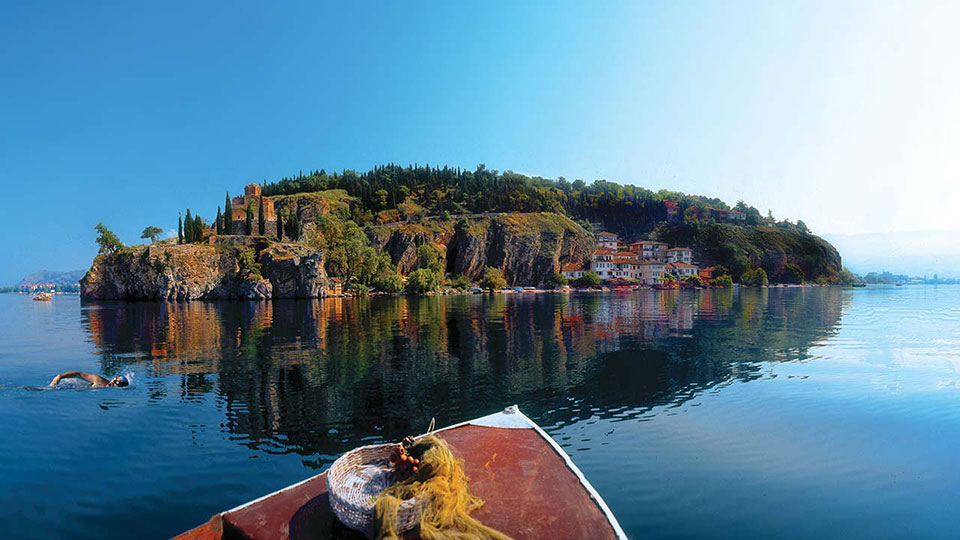Geographic position of Ohrid
Ohrid is a city in the southwestern part of Macedonia, on the northeast coast of Ohrid Lake. Ohrid and Lake Ohrid are one of the main tourist destinations in Macedonia. This city is located in the southwestern part of Macedonia, on the north-eastern coast of the Ohrid Lake. In terms of traffic it is linked to roads leading to Skopje, Bitola, Debar and Republic of Albania. The old road Via Egnatia, linking the Adriatic and the White Sea, also passed in its vicinity, which was an important circumstance for the development of Ohrid in the past. Near the city is the Ohrid Airport , through which air traffic takes place with certain destinations outside the Republic of Macedonia. Traffic on the waters of the Ohrid Lake is of little importance. It is used in the function of fishing and for tourist purposes. The only disadvantage is the absence of rail traffic.

History of the name of the city of Ohrid
Due to the large number of churches and monasteries, the city of Ohrid is known as Balkan and European Jerusalem. It is also known as the "City of Light", a literal translation of its old name, Lychnidos. The Ohrid region is included in the UNESCO World Heritage. According to one legend, written by the Miladinov Brothers, when the Ohrid fortress was made, Emperor Justinian climbed the hills on which the city lies, and, looking at the beautiful surroundings, exclaimed "oh-hill", which means - a beautiful hill. Since then, the city is called Ohrid. Modern Ohrid is the heir of the ancient Lychnidos. According to the data, the city was first mentioned 2,400 years before the new era. Lihnidos was on the Via Egnatia road, the oldest and most significant Roman traffic route in the Balkans.

Historical data for Ohrid
As early as in the second half of the 8th century the Ohrid region became an attractive area for the Bulgarian state. During the Bulgarian tsar Boris I Mihail, the Macedonian territories in a military-administrative respect were included in several "komitats". Ohrid was in the komitat which covered the Ohrid - Devol areas. In 886, Clement, after a short stay in the Bulgarian court, was sent to Macedonia with an important state mission. As a teacher and bishop Clement together with Naum laid the foundations of the so-called Ohrid glagolic literary school. Owing to the activities of Clement and Naum, the city of Ohrid, in the second half of the 9th century, became a Slavic cultural centre, and the emperor Samuil converted it into a religious centre and the capital of the kingdom. His fortresses still stand high above the city today.
Samuil's Fortress in Ohrid
The shape of the Samuil’s Fortress dates back to the time of Samuil, although there are also data about demolitions and repairs of the fortress by the Turks and Byzantines. It features walls with a height of 10 to 16 metres and a thickness of several metres. On all sides, with the exception of the south, which is facing the lake, the hilly part of the city was protected by high walls and towers, three kilometres long, near the port of Ohrid. With its fortifications and walls it covers the entire Ohrid Hill. Today, 18 towers and four gates are preserved on the fortress. Parts of the fortress extend to the lake and to the lower hill of the old part of Ohrid. In the old part of the city, there were three gates, from which only the Upper Gate was preserved. Many stones with Greek inscriptions are built in its walls. Under a partially demolished outer layer in the inner walls, horizontal layers of bricks of Byzantine format are noted.
Today, 18 towers and four gates are preserved on the fortress. Parts of the fortress extend to the lake and to the lower hill of the old part of Ohrid. In the old part of the city, there were three gates, from which only the Upper Gate was preserved. Many stones with Greek inscriptions are built in its walls. Under a partially demolished outer layer in the inner walls, horizontal layers of bricks of Byzantine format are noted.
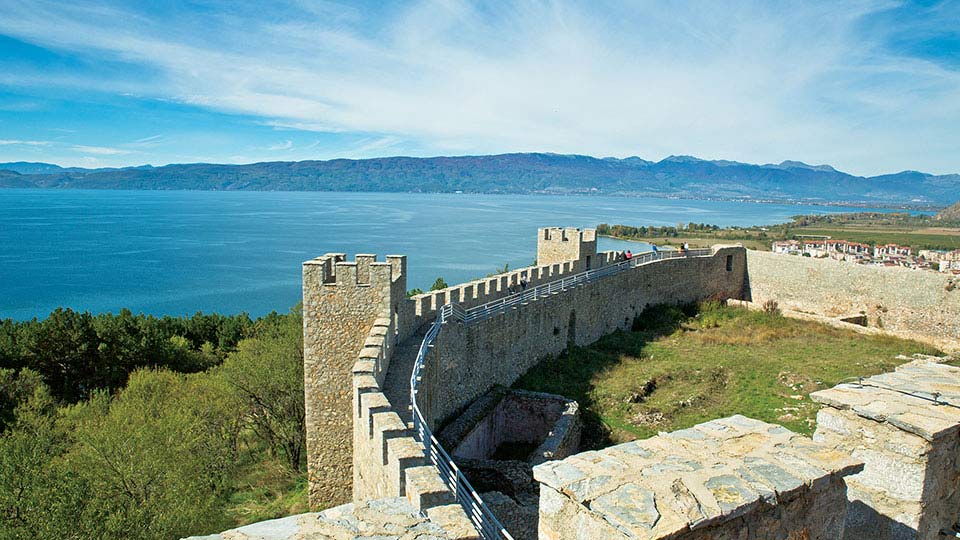
Beaches on the Ohrid Lake
Along the city beaches in Ohrid and Struga, on the line from Ohrid to St. Naum stretches the Ohrid Riviera: Gorica
- 4 km from Ohrid
- Beach surrounded by high rocks
- Ideal view of the whole Ohrid riviera
Slavija
- 4 km from Ohrid, in the area of Sveti Stefan
- One of the most frequent beaches, arranged and clean
Metropol and Bellevue
- 8 km from Ohrid, 100 m from the lake
- Two hotels with modern equipped rooms with lake view
Lagadin
- The longest beach - 285 metres
- Various snow parties are organized - foam, rain and balloons
Eleshac
- Autocamp 10 km from Ohrid
- 700 beds in bungalows and camp - trailers
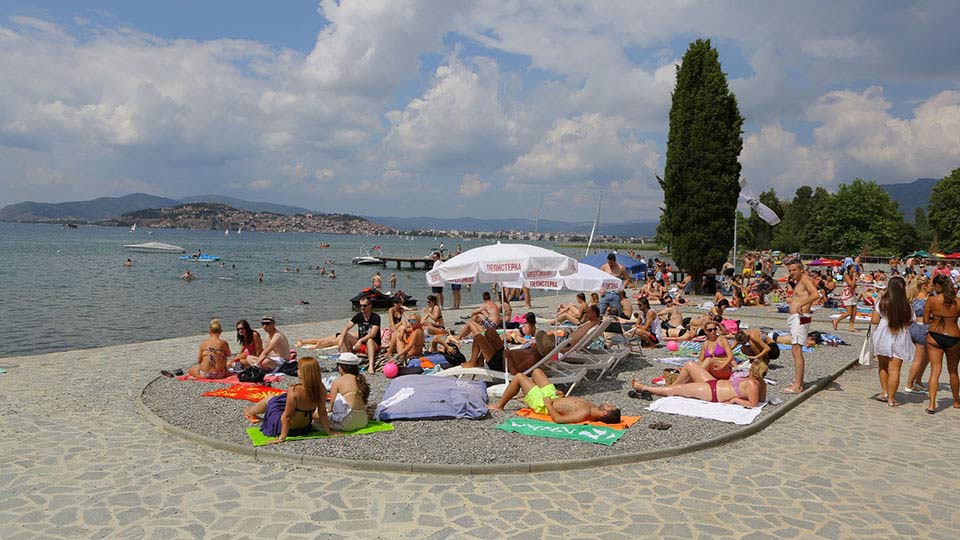
Ohrid trout
One of the endemic species is the Ohrid trout, freshwater fish in Europe and is the closest ancestor of the species that lived in this area since the Tertiary. It differs from the stream trout by the flattened body, the small head and the stary grey spots on the body. The colour of the meat in some of them is white, and in some pink. The maximum length ranges from 25 to 60 cm, and the maximum weight is up to 15.8 kg. The crossbreeds created by crossing the stream and Ohrid trout along the body have alternately red circular and gray stellar spots like the letnica. Ohrid trout is tasty to eat. As one of the trademarks of Macedonia, it is also found on Macedonian coins.

St. Clement's Monastery St. Pantelejmon, Plaoshnik in Ohrid
Near the Early Christian Episcopal Basilica in Plaoshnik area, in 2002, the newly built temple dedicated to St. Pantelejmon was consecrated. St. Clement, was a great builder of churches and monasteries, the most famous of which is the Plaosnik monastery. The latest archaeological research in 2000 confirmed that in this place he renewed a former monastery in the form of trikonos (three-leaf clover). It testifies to the Christian church life in Macedonia from the 1st century of the new era. 500 graves of monks were discovered, as well as other rich findings: golden garments, crosses, icons, relics ...

At the site of the monastery of St. Clement, a new church was built in the 14th century, which the Turks converted into a mosque in the 15th century. Then the remains of St. Clement were transferred to the church of H. Bogorodica Perivlepta in Ohrid, and after 530 years, they were returned. Here was the Ohrid School, a focal point of Slavic literacy, spirituality and culture, considered the first Slavic university in the world.
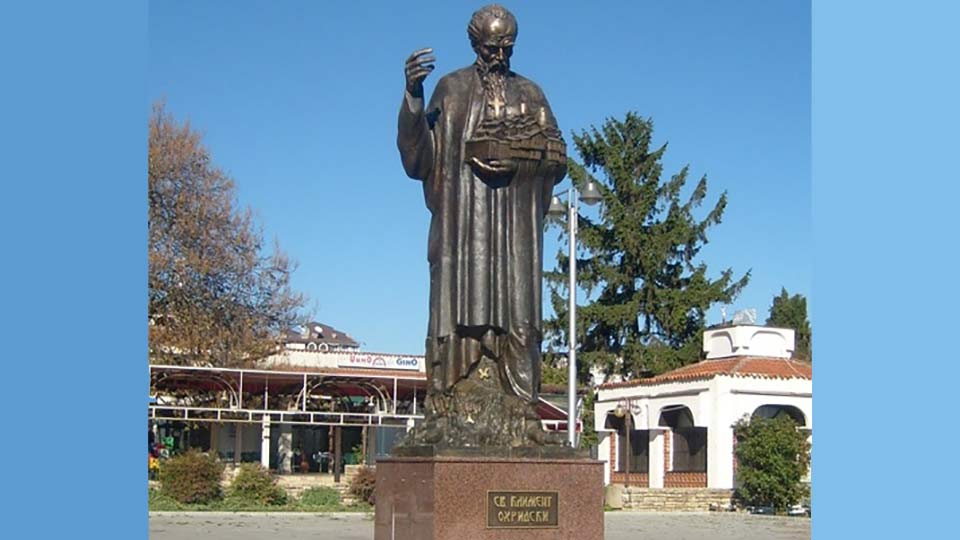
Monastery St. Naum Ohridski in Ohrid
Built on a high rock above Lake Ohrid itself, at its southernmost point. The monastery church dedicated to the Council of the Holy Archangels, which in 905 was built by St. Naum and in it is also the grave of St. Naum, built in the southeastern part of the narthex, in the same place as the tomb of St. Clement.

The church was built with a foundation in the shape of a trikonos (a leaf of clover). In the period from the 10th to the 13th century it was completely destroyed. As late as in the sixteenth century on its foundations the current church was built, upgraded and expanded in several phases. In the second half of the 18th century the dome was built above the church's porch, and the last significant renewal was carried out towards the end of the 18th century (1799). The inscription above the western entrance from inside mentions that the fresco painting of the church occurred in the time of the abbot Stevan in 1806. Then the chapel with Naum's tomb was also painted. The present church has the form of an inscribed cross with a square area with a dome, placed on four pillars. The tomb of St. Naum is an attached building with a wide and low dome. In the monastery today there are still pillars with engraved Glagolic and Cyrillic letters.
St. Jovan Bogoslov, Kaneo in Ohrid
This medieval church is known for the name of the former fishing village of Kaneo, which in Latin means "shine", one of the most photographed Ohrid symbols. The monastery St. John Kaneo was built and frescoed in the 13th century, and the founder of the church and painters of the frescoes are not known. The frescoes are preserved in the cube and the altar space and are severely damaged, because the church for a long period between the 17 th and the 19th century was partially destroyed and abandoned. Then most of the frescoes were destroyed.
In the recent history of this church, several restoration and upgrades were established, and in 1889 a new wooden iconostasis was placed and some parts of the old paintings were repainted. The original appearance of the church St. Jovan Kaneo, one of the symbols of ancient Ohrid, was restored after the conservation work in 1963 and 1964, when the bell tower narthex was demolished, which were built in the 19th century. Then the frescoes in the cube were discovered. There are only parts of the 13th century frescoes in the dome and apsis. Great and specific are the two angels of the Apostles' purification, who are in royal clothes, which is a rarity in the fresco painting.
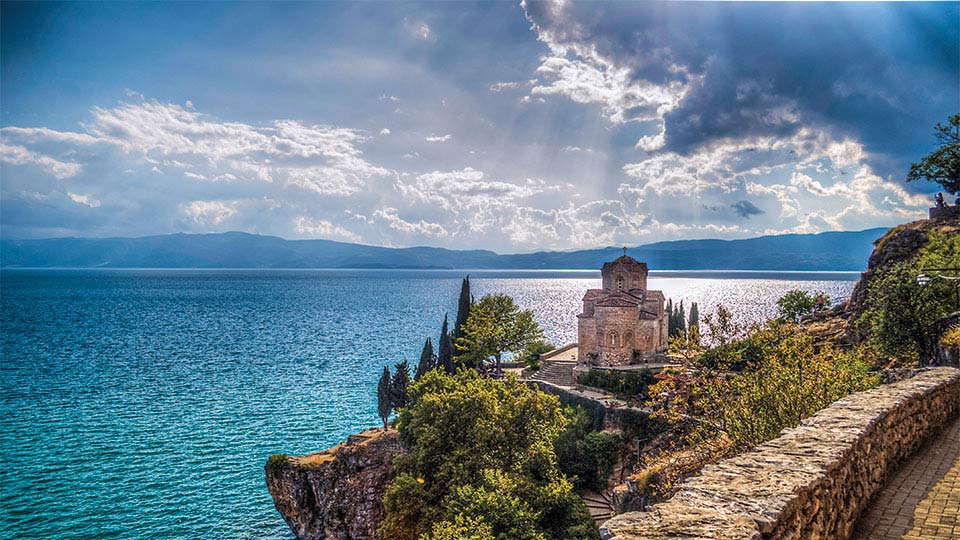
Cathedral Church H. Sofija (11th)
This cathedral church, in which the Ohrid Archbishops were enthroned, where the renewal of the Ohrid Archbishopric in 1958 was proclaimed, as a cathedral church is one of the largest complexes of fresco painting of Byzantine art in Europe from the 11th century. The frescoes of the 11th and 14th centuries are of exceptional importance and they find their place in all scientific publications. The grand narthex dates back to 1313/14 and is one of the most beautiful buildings of that kind in the Byzantine and Macedonian building cultures.
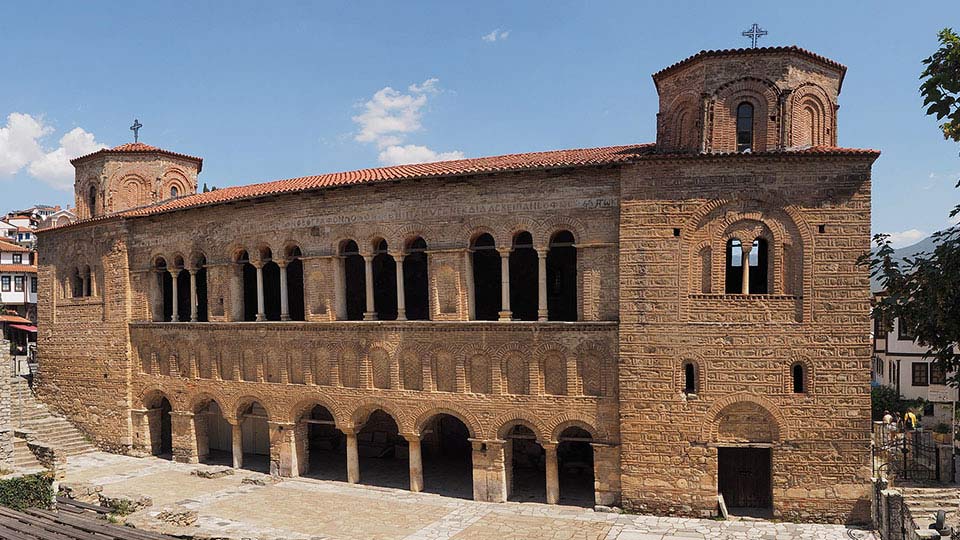
The church with a decorative facade, built of bricks and mortar, is dedicated to H. Sofija, which means to God's Wisdom - the Lord Jesus Christ. It was built in the 10th century on the foundations of an early Christian basilica. In the deaconicon are depicted the Six Roman Popes, which expresses the relationship between the Constantinople and the Roman Church before 1054. H. Sofija in the second half of the 15th century was converted into a mosque. The frescoes were painted, the dome was ruined and leveled with the roof, the altar marble barrier removed, and a minaret was erected above the northwest cube. Today, the church has a permanent religious service, and is also used as a concert hall and a museum.
Church H. Bogorodica Perivlepta in Ohrid
The year of building (in the time of Byzantine Emperor Andronicus II Paleologus) is established from the text in the inscription above the entrance. The church is a wonderful whole of a beautiful building and a rich fresco-painting. Among the people it is known under the name St. Clement. It is from the 15th century, when the Turks destroyed the St. Clement's monastery on Plaoshnik to the ground, and the remains of St. Clement were transferred here. It became a cathedral church, that is, it became a temple of the Ohrid Archbishops at the time when the cathedral Archbishop Church of H. Sofija was converted into a mosque. In addition to the first head of the MOC, the following three heads were enthroned in this church (Angelarij, Gavril and Mihail). The fresco painting is the work of the painters Mihail and Evtihij, the most famous names of their time, who also worked in the monasteries St. Nikita in Banjani, Skopje region and St. Gjorgji in Staro Nagorichani, Kumanovo region.
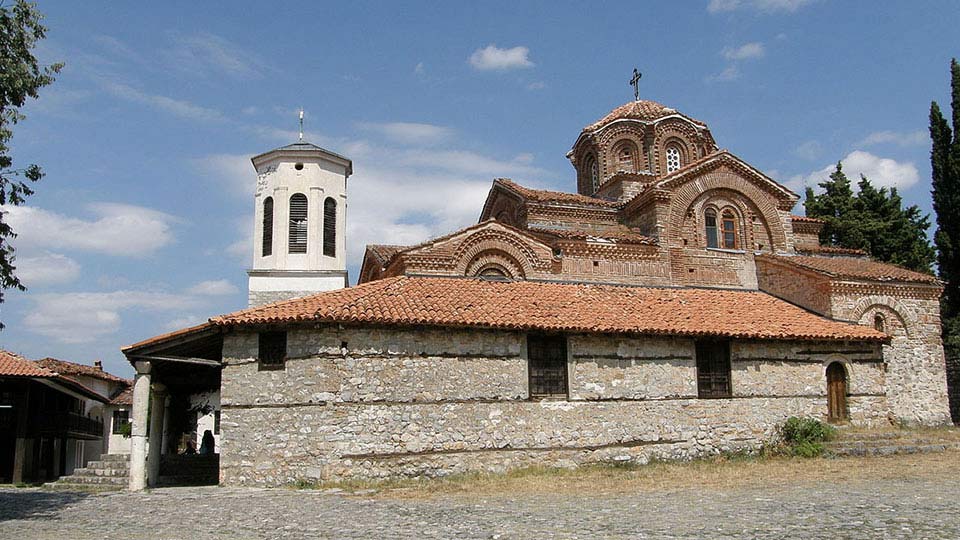
Cave Monastery St. Erasmus in Ohrid
In the Middle Ages, the cult of St. Erasmus, an Antiochian bishop preacher, was spread in the East and the West, and especially in Italy, France, and even to Spain. In Macedonia, his cult was developed in the Ohrid region, because he retained a long period of his life in Ohrid and realized significant missionary activity in the Macedonian regions. Ohrid devoted a beautiful monastery, built in a cave along the road Ohrid-Struga, near the very shore of the lake to his early Christian preacher. The frescoes, including the character of St. Erasmus, originated from the 12th century. An early-Christian basilica from the 3rd-4th century, dedicated to St. Erasmus was discovered in the vicinity.
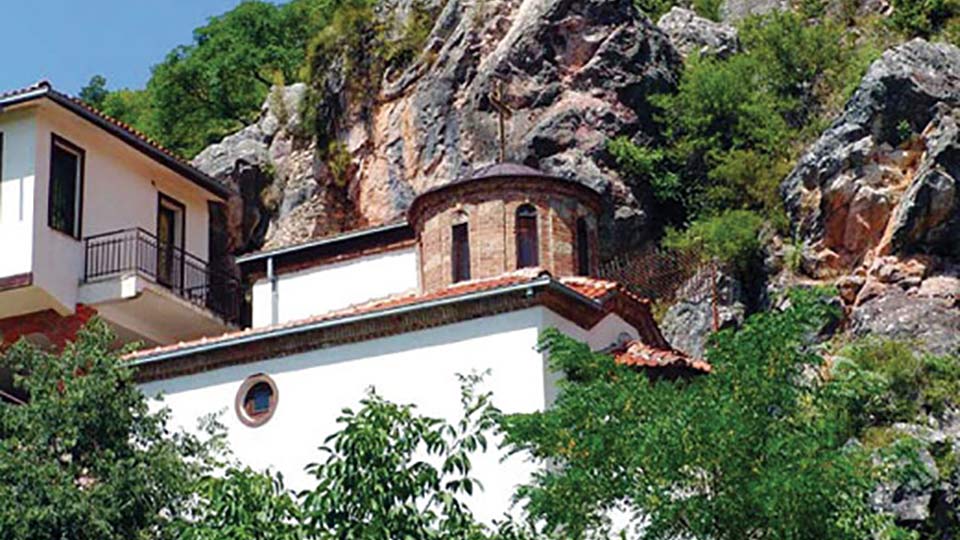
St. Konstantin and Elena in Ohrid
The Church St. Konstantin and Elena in Ohrid is located in the immediate vicinity of the Church of H. Bogorodica Perivlepta. It was built by Hieromonk Parthenius. It is a one-aisled building and has frescoes from the time of its construction, but also from the next periods, more precisely from the 14th , 17th and 18th century.
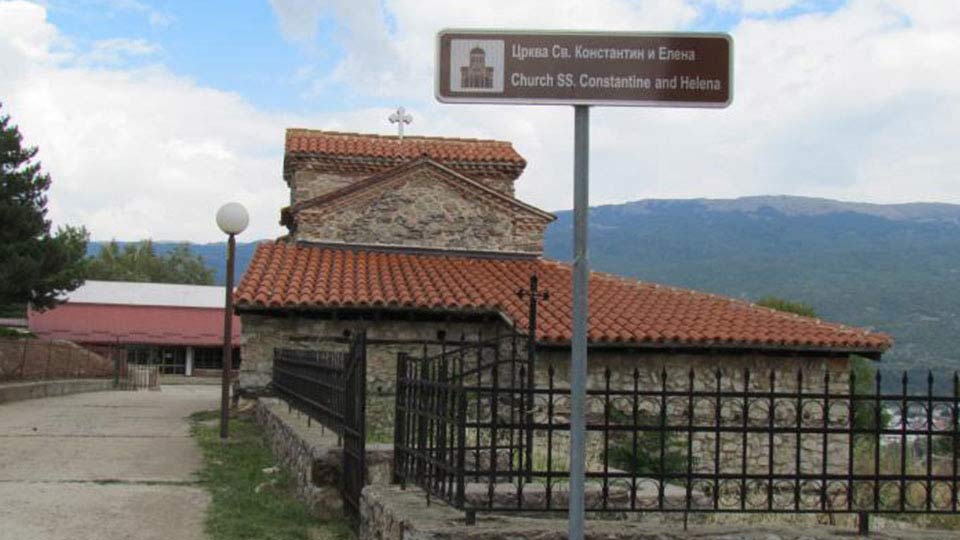
Bay of Bones in Ohrid
This is actually a reconstructed prehistoric pile settlement from the 12th-7th century BC, placed above a platform held by wooden piles. It is the newly opened water museum, where the remains of an ancient habitat, a diving base and reconstructed fortresses from the Roman Empire from the 2nd century are located in the water.
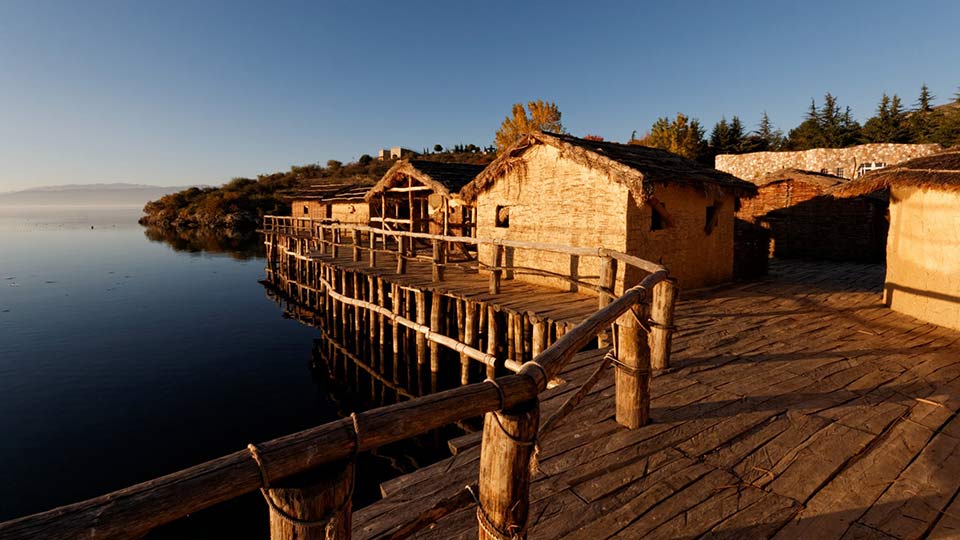
At this site, at a depth of three to five metres, remains of 6,000 wooden piles were found, which probably relied on a common platform with 20 wooden houses. According to the surveys, the area of the settlement extended to 8,500 m2. Given that they were built of trees, reeds and mud, the habitats were susceptible to fires and were frequently renewed, due to the large density of the piles (remains of burnt wood and coal were found). The platform with the mainland was connected with a movable bridge, which during the night was raised for the protection of animals and enemies. Currently a part of the settlement, with seven houses built on a platform that has been installed over 1,200 piles prepared to be more resilient and more durable has been reconstructed. The interior of the houses has also been reconstructed, which offers an interesting experience for the way of life at that time.
More information about Ohrid can be found on this website.

